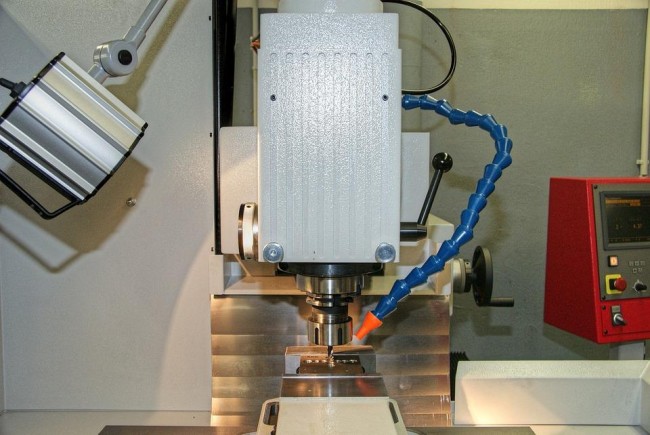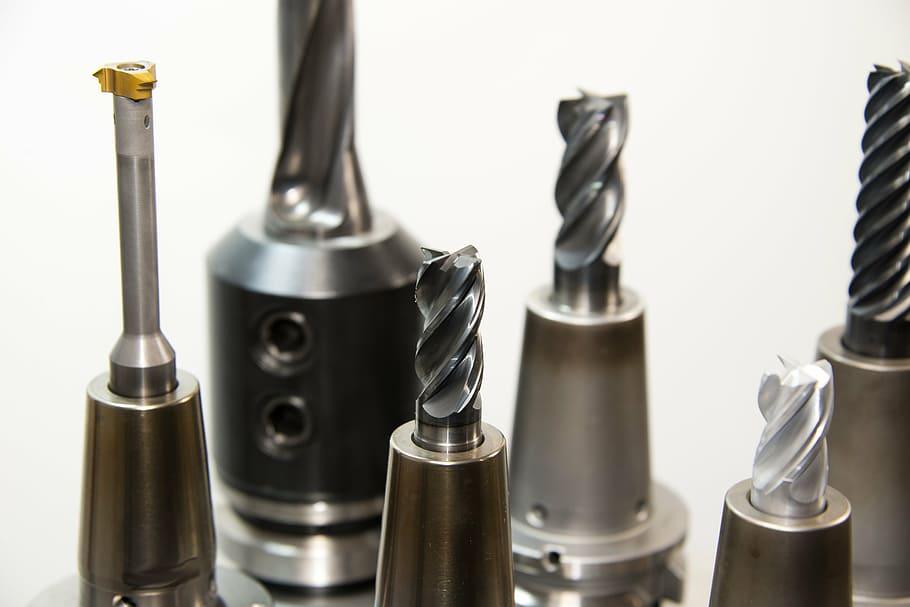CNC Milling is a specific CNC Machining. It can produce a custom-designed component of top quality and precise finishing.
It is favored in many industries because of its precision in consistency, reliability, and capacity to boost production and increase consistency.
The milling process begins by drawing CAD (computer-aided design), which can control the CNC Milling machines.
CNC is a term used to describe Computer Numerical Control, so computers control machines for milling. If you’re interested in learning more about CNC milling, look at our detailed guide.
In this article we will discuss the basics of CNC Milling and review the CNC Milling procedure, the CNC machines’ work, and the various benefits of CNC milling machines.
What is a CNC milling machine?
A milling machine produces high-quality parts with a high finish and detail. CNC milling machines employ rotary tools that cut from the material using instructions from the CAD files to design the piece.
The milling machine’s computer controls the purpose and the location of the cutter and requires only minimal human input needed for the manufacturing.
CNC milling machines have made large quantities of various components from different plastics and materials. The primary purpose of CNC milling services involves cutting mechanically at an object to create its desired form.
What exactly does a CNC Milling Machine do?
Utilizing Subtractive Machining Technology, the 3ERP CNC milling machine creates intricate components for various industries. The milling machine cuts off the workpiece and then makes the final product using 3, 4, or five axes.
The more axes the CNC milling machine is equipped with, the more complex and intricate the last piece could be. In various industries – such as medical and aerospace industries, a CNC milling device is utilised to create challenging parts.

How Does CNC Milling work?
It is a CNC Milling process that works by the machine taking in coded instructions and then putting them into action. The process begins with creating a CAD 3D file representing the last component.
After the design is completed, it is converted into a machine-readable format. The CAM (Computer-Aided Manufacturing) software then converts the design to a CNC machine, typically in G-code format.
This serves as the instruction for every machine’s action. This is a replica of the CAD design on the selected material with high precision and effectiveness.
CNC Milling can produce high and low quantities of complex and intricate components by employing subtractive machining technology.
Materials are removed from a blank workpiece while the milling device operates an elongated tool that rotates, known as a milling cutter. The cutter can be cut at various angles and move along different angles based on the machine.
The last component is first developed using CAD, also known as Computer-Aided Design, before being fed to the milling machines to finish production.
CNC Milling Process
Specific milling machines are more suitable than others based on several aspects. The complexity involved with the CNC milling procedure will depend on the final product’s design.
The more structurally significant and sophisticated the piece, or the item, is, the more complicated the process may have to be.
A sophisticated machine might need to be employed for complex designs that require high precision. The essential machined parts for general use do not need the highest accuracy or high-quality finish. Complex and intricate designs require further milling.
Milling machines typically use 3, 4, or 5 axes.
For simple parts, less than three axes are required to create the desired design. Simple geometries may utilize three-axis milling machines. They are simple to set up and use, with great accuracy for a small cost.
The cutting tools are connected to a spindle working with 3 linear axes. They can be spun at thousands of RPM, so even the most robust material can be cut effortlessly and accurately.
3-axis milling machines are the most commonly used type of milling machines. They can be cut horizontally (Z-axis) and in both an X and the Y direction.
It’s not possible to cut undercuts using the 3-axis milling machine. This means that more intricate designs will require a complicated milling machine.
The milling machine with four axes is more advanced and can turn along the X-axis (similar to a lathe).
5-axis milling machines have rotation in both the X – and the Y-axis. They are the complete milling machines used for extremely complicated designs, such as implants and medical devices for medical industries and impellers and aerospace structures.

Features of a Milling Machine
The most important aspects of a milling device are usually broken down into seven components. The features are:
Knee – The knee is fixed to the column but adjustable. It is a support for the saddle and the worktable. It can be lower or raised using the Z-axis.
Columns – The column is the primary support structure of the machine. It acts as a reinforcement for other machine components.
The Saddle -The saddle is above the knee and under the worktable. It can be moved to be parallel with the spindle’s direction. The workpiece is carried in a horizontal position if required.
The worktable – The are is situated just above the saddle, used to secure the workpiece. The worktable on a milling machine may be adjusted based on the model of the machine and maybe utilised horizontally or vertically.
Spindle – This rotating part can support an arbour or machine tools. Arbour, and is powered with an electrical motor.
Arbour – The arbour can mill horizontally. It is placed inside the spindle and acts as a shaft to attach various machines.
Ram – The Ram is typically located inside a vertical milling machine and is attached at the highest point of the column, where the spindle is held.
Machine tool – The machine tool is the part which performs the milling process. The spindle fixes it and then removes the piece’s material. There is a broad range of machine tools.
How much does CNC Milling cost?
The price for CNC Milling depends on many aspects. The costs associated with CNC Milling largely stem from the time to mill each piece. More time in the milling process could be needed to remove vast quantities of hard or material.
Certain parts might require more complicated tools or cuts dependent on the model of the piece. Other aspects that affect the price of CNC milling include the material and complexity of the component.
The advantages of the CNC Milling process
1. Quality and precision are guaranteed
The character is that CNC Machining is a process which leaves much room for error and the highest levels of precision and accuracy.
This is since it runs using a computer-driven program that inputs 3D designs created using CAD (Computer-Aided Design). Every operation is launched using an interface between the machine and the user.
The machine can execute these instructions without the requirement for manual input. Automated processes provide the highest level of precision so that even the most intricate and finite geometry can be efficiently managed.
2. CNC Milling allows for high production output
The speed at which CNC Machines operate means they can produce large quantities because of the involved automated processes.
CNC Milling is a trusted and well-known option when the part is required to be made in large amounts, with each piece having the same consistency in terms of finish and quality.
It is simple to set up and use a three-axis machine that can produce high-quality parts at a minimal cost.
3. CNC Milling is a less labor-intensive process
Utilizing a CNC Milling Machine significantly reduces the labor required in production. The equipment utilized in the CNC Milling machine can spin at thousands of RPM (revolutions per minute), increasing output and efficiency.
The manual process cannot achieve the same result. It’s important to note that the less complicated the design and the more human involvement is required.
For instance, if a complex design requires that the blank be moved, it will need machinists to ensure that the work is completed safely and securely.
Final Words
CNC milling tools are developed and designed to cut through the workpiece at the most precise precision. The computer’s program controls the machine’s movement, so every component is manufactured with the same accuracy.
In a more meaningful sense, parts can be manufactured in immense quantities, with the producer secure that all finished features will be of the same quality.
Contact 3ERP CNC milling to discuss the requirements of your project and get your manufacturing started. Get a CNC Milling quote today, and we’ll be back in touch within 24 hours.
